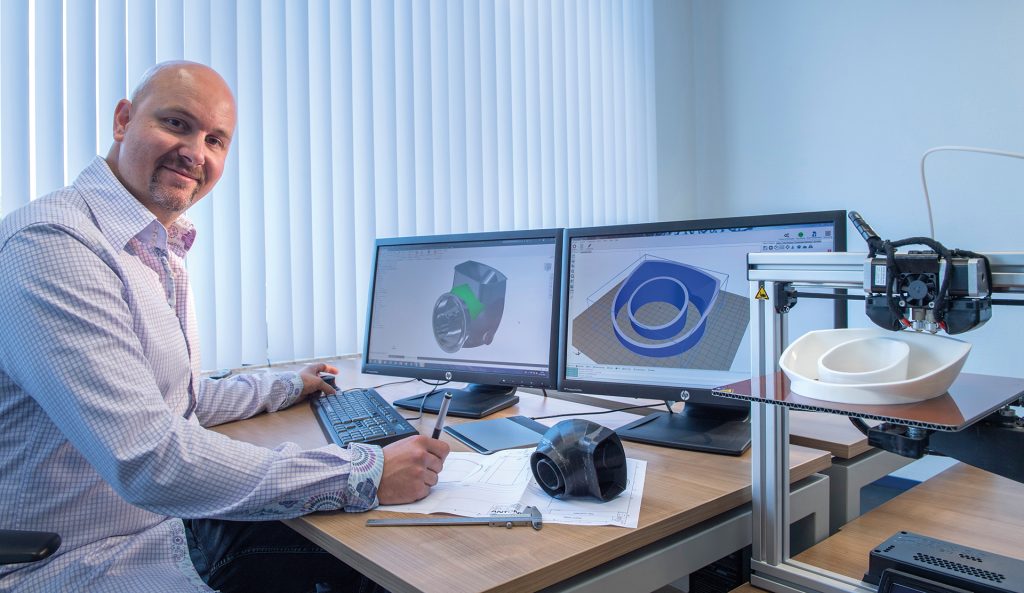8 stages of an engineering for manufacturing project
How do you develop your product from concept to series production? Antonius excels in supporting companies develop and engineer their products for (at scale) manufacturing. By applying our manufacturing knowledge and experience to your product designs at an early stage of the engineering process we improve your time to market and are able to accurately predict production costs. In this article we discuss our Engineering for Manufacturing approach.
Antonius’ unique strengths can be found at the intersection of engineering and manufacturing. Our extensive knowledge of production processes and construction allows us to help our clients adapt their product or parts to at-scale production. The resulting product can be manufactured in the required timeframe and at a cost that allows for a competitive margin. Subsequently, Antonius can either manufacture it or oversee production at another facility, making us a trusted partner for companies in a wide range of markets.
Our team of specialized engineers, project managers and planners work closely with the client on moving the product through the various stages of the engineering project. We outline all individual steps below and would like to emphasize beforehand that, in practice, multiple stages are often completed in the same timeframe in reaction to client requirements such as market timing.
Specification
In the specification phase, we work with the customer to elaborate on and clarify their specifications. We define high-level customer requirements and constraints as well as, depending on the complexity of the product, and subdivide the scope. The resulting document lists the requirements for the product or application and serves as our checklist for the following phases.
Concept
Together with our customers we create a general sketch of the required solution and further clarify the direction we are heading. By discussing the various ways we can solve the challenges we discover their various pros and cons and select the most appropriate solution for further development.
Basic design
In order to be able to fully evaluate the chosen direction we complete a basic design. We draw schematics, diagrams and/or layouts that help us bridge the gap between concept and a real-world, manufacturable solution. Our experience with manufacturing is invaluable in this phase, our engineers are able to evaluate the impact of certain choices on production processes and costs and the team can incorporate the consequences in the design.
Detailed design
Finalizing a design also includes matching tolerances, material requirements, sourcing and matching the various parts. Again, manufacturability is a key concern, our experience helps us discover risks and challenges before applications or products are being produced at scale. Such challenges might include changing assembly conditions or requirements, the impact of production processes on the interoperability of parts and even the preparation of raw materials.
Download: Renewable energy and carbon capture
Using our experience in tanks for the transition to renewable energy in carbon capture and storage.Fabrication / Realisation (prototyping)
Depending on the complexity of the product, application, or component we move toward either fabrication or prototyping. To prepare for production, we select materials, production processes, the sequence of operations and the tools that are to be used such as metal cutting or forming tools. This phase can also involve the testing of (prototype) iterations of the product and adjustments that are made according to the findings in each iteration.
Testing / Design review
As soon as the fabrication phase is completed, the final product is tested before being commissioned and the project documentation is finalized. In this phase, we freeze development and changes can no longer be made. All documentation is used as the basis for the manufacture of the developed product whether it will lead to a single product being built or the start-up of series production.
Post-engineering: service
Antonius’ work does not end with fabrication or series production, of course. Additionally, services such as assembly, installation, testing, maintenance or other forms of aftercare are regularly performed by Antonius staff. For many clients, Antonius is the first point of contact for anything product related and we provide a wide range of services because of that.
Would you like to know more about Antonius’ added value in engineering and manufacturing? Please contact our sales team through sales@antonius.nl or+31 (0)475 439 000
